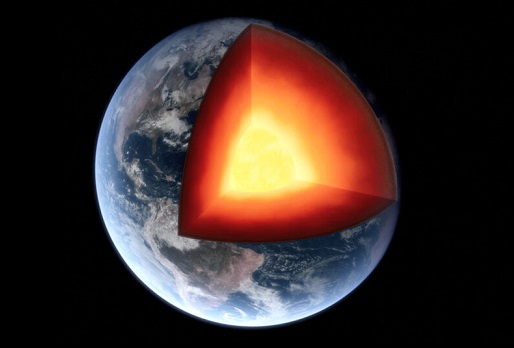Earth’s core has stopped rotating and is probably changing direction. What happens now?
Earth’s inner core recently stopped rotating and may now reverse its spin, according to a surprising new study that probes the deepest reaches of our planet with seismic waves from earthquakes.
The surprising results suggest that Earth’s center oscillates and reverses direction on a periodic cycle lasting about 60 to 70 years, a finding that solves long-standing mysteries about climatic and geological events that occur in a similar time frame can solve and that affects life on our planet.
Of course, this is more or less the plot of the 2003 disaster movie The Core, but there’s no need to worry about averting the impending apocalypse by nuking the center of the Earth.
While the rotation of the core affects the climate of Earth’s surface, scientists think that this periodic spin switch is a normal part of its behavior that does not pose a risk to life on our planet.
Earth’s inner core is a solid metallic ball about 75 percent the size of the Moon. It may spin at different speeds and directions than our planet because it lies within a liquid outer core, but scientists are not certain how fast it spins or whether its speed changes over time.
Located some 3,000 miles below our feet, the core experiences such intense pressure that it is likely to be as hot as the surface of the Sun.
Because it is so remote and difficult to study, the inner core is one of the least understood environments on our planet.
However, it plays a role in many processes that make our world habitable for life, such as Earth’s protective generation magnetic field, which prevents harmful radiation from reaching the surface.
Now, Yi Yang and Xiaodong Song, a pair of researchers from the Sinoprobe Lab at Peking University’s School of Earth and Space Sciences, have captured “surprising observations that indicate that the inner core nearly stopped its rotation in recent decades.”
and is experiencing a turning point back to a multidecadal oscillation with another turning point in the early 1970s, according to a study published Monday in Nature Geoscience.
“Two major forces are acting on the inner core,” Yang and Song said in an email to Motherboard. “it is an electromagnetic force.
Earth’s magnetic field is generated by fluid motion in the outer core. The magnetic field acting on the metallic inner core is expected to drive the inner core to rotate by electromagnetic coupling. Second gravity The force is.
The mantle and the inner core are highly heterogeneous, so the gravity between their structures pulls the inner core into a gravitational equilibrium called gravitational coupling.
“If the two forces are not balanced, the inner core will accelerate or decelerate,” he said. “Both the magnetic field and the Earth’s rotation have a strong periodicity of 60-70 years. Electromagnetic and gravitational forces drive the proposed 70-year oscillation of the inner core.
Song has spent decades trying to unravel the secrets of the inner core by studying the seismic waves that travel through this distant region.
He was part of the team that first reported evidence of rotation of the inner core in 1996 by measuring slight time (or “temporal”) changes in these waves, which are generated by earthquakes.
However, the origin of the temporal variations has been a matter of debate within the geosciences community ever since, as some scientists believe that wave patterns arise from phenomena at the boundary between the outer and inner cores.
We hope you like our article on Earth’s core has stopped rotating and is probably changing direction.
Thanks for visiting US Map of State

